Enchanter’s Nightshade (Circaea canadensis), also called Broadleaf Enchanter’s Nightshade, is a small but eye-catching perennial that blooms in early to mid-summer along forest trails. Where I live and play in central New Jersey and Pennsylvania, that means late June through mid-July.
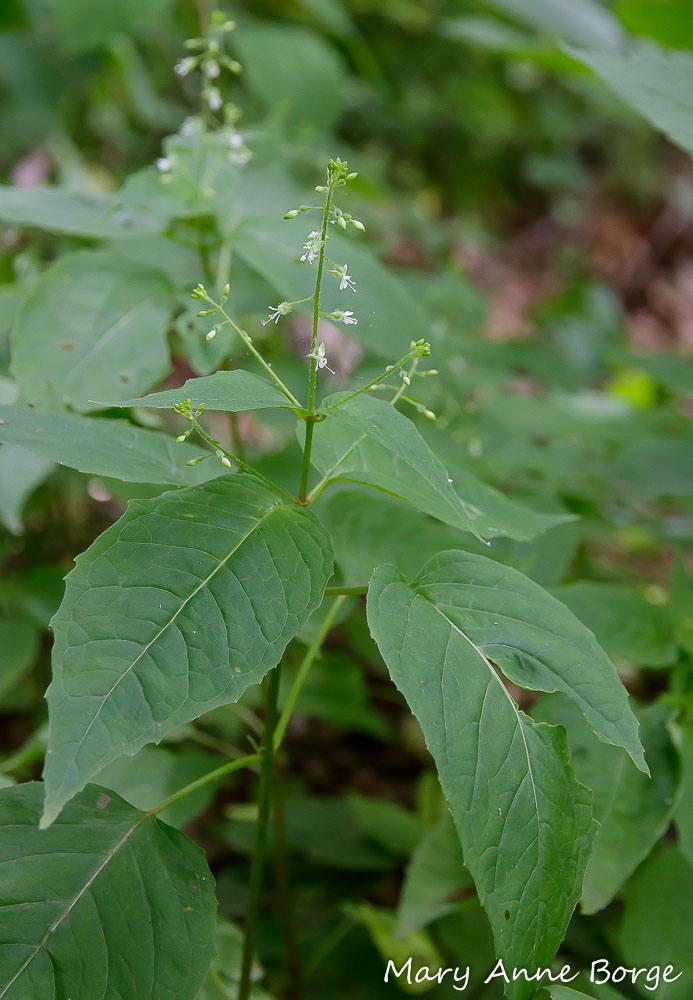
This diminutive resident of the forest floor has several pairs of leaves opposite each other along the stem, with a cluster of tiny flowers rising above them. It often grows to about a foot (.4 m), but can reach as much as two feet (.7 m) in height, including the flower cluster (infloresence). The tiny white flowers are only about an eighth of an inch (4 mm) in diameter, and yet in the dim light of summer in the woods they are attention-grabbing, for both humans and pollinators.
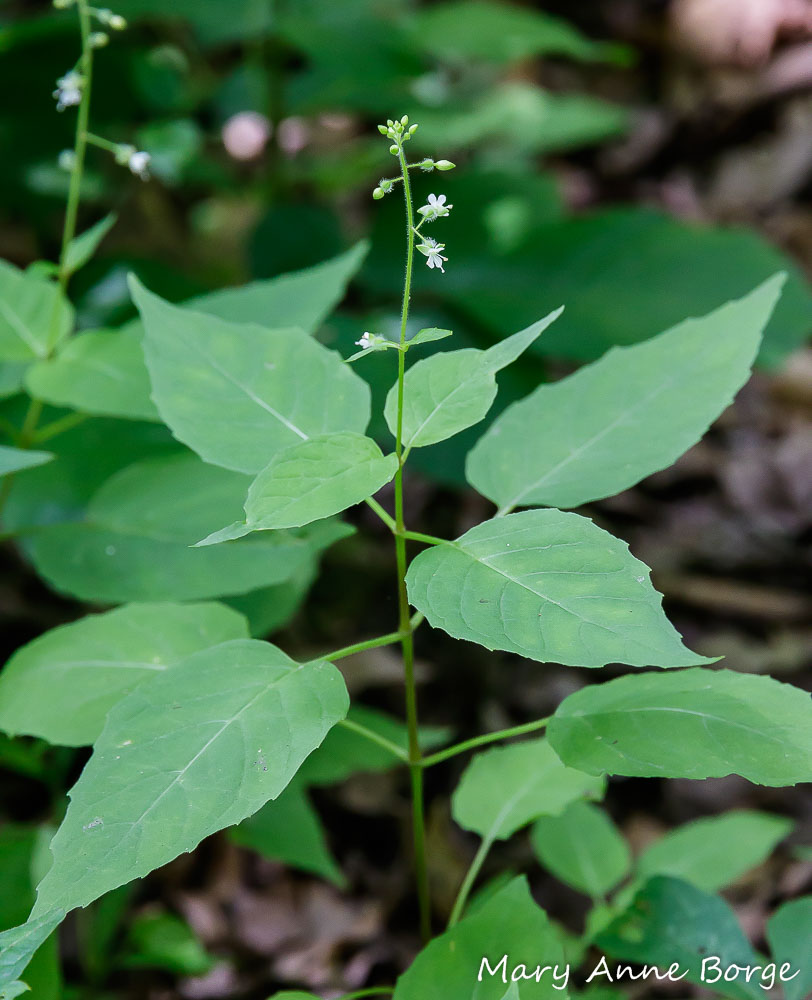
Each flower has two deeply lobed white petals that look a little like mouse ears, backed by two green, wing-shaped sepals that protected the flower before it opened. Two stamens, the male reproductive parts, reach out like arms from each side at the center of the flower, the anthers at their tips resembling mittened hands. The long narrow structure projecting from the very center of the flower is the pistil, the female reproductive part. The circular washer-shaped tissue at the base of the pistil is the source of the flower’s nectar, which is offered to entice pollinators to visit.
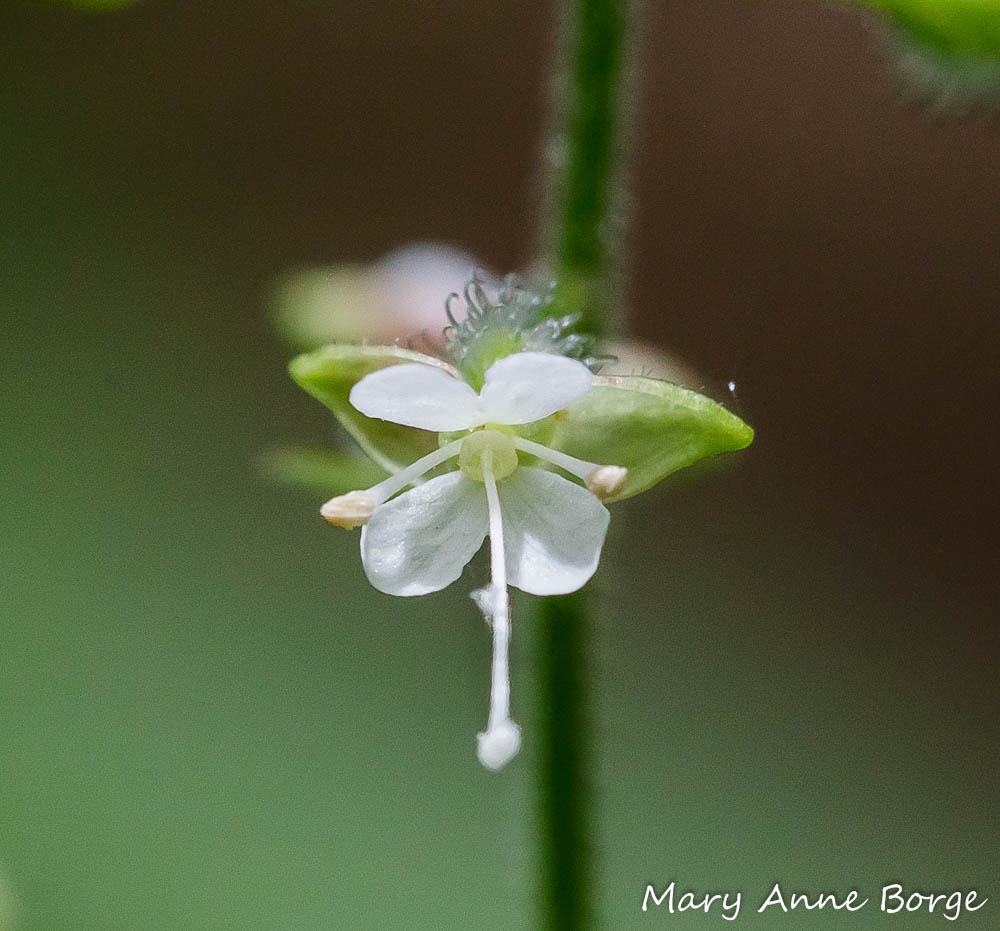
In profile it’s easy to see the veining on the flower’s petals. They are nectar guides, directing pollinators to a potential reward inside. The stigma reaches out beyond the petals, ready to accept incoming pollen on the stigma at its tip, positioned to be the first thing a pollinator encounters when visiting. The flower’s ovary, covered in hooked hairs, is visible behind the sepals. If pollination is successful, this will ripen to become a small burr-like fruit.
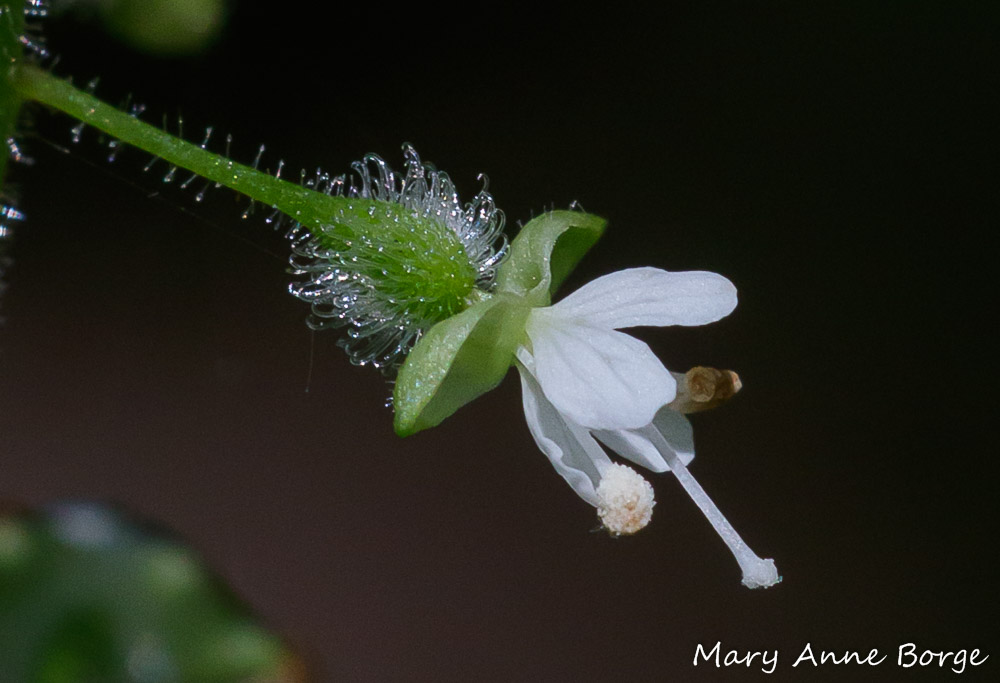
The stems of the entire inflorescence are covered with glandular hairs. Hairs on plant tissue usually serve to discourage herbivores from eating the plant, and glandular hairs often have the added benefit of emitting a chemical offense to enhance the deterrent effect.
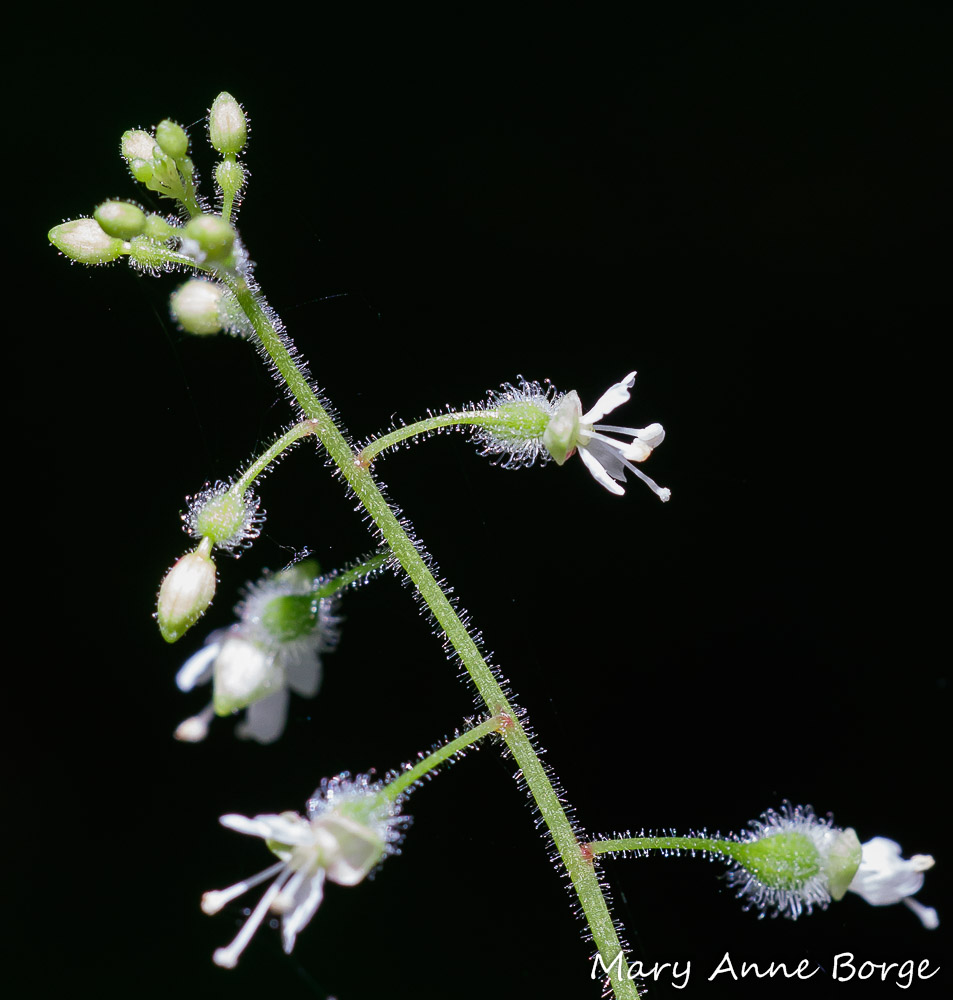
Even such tiny flowers have pollinators who are perfectly matched for them, primarily sweat bees (Halictidae) in the genus Lasioglossum and tiny flower flies, most commonly of the species Toxomerous geminatus. The group of bees called sweat bees get this common name from their habit of obtaining nutrients by licking up human sweat.
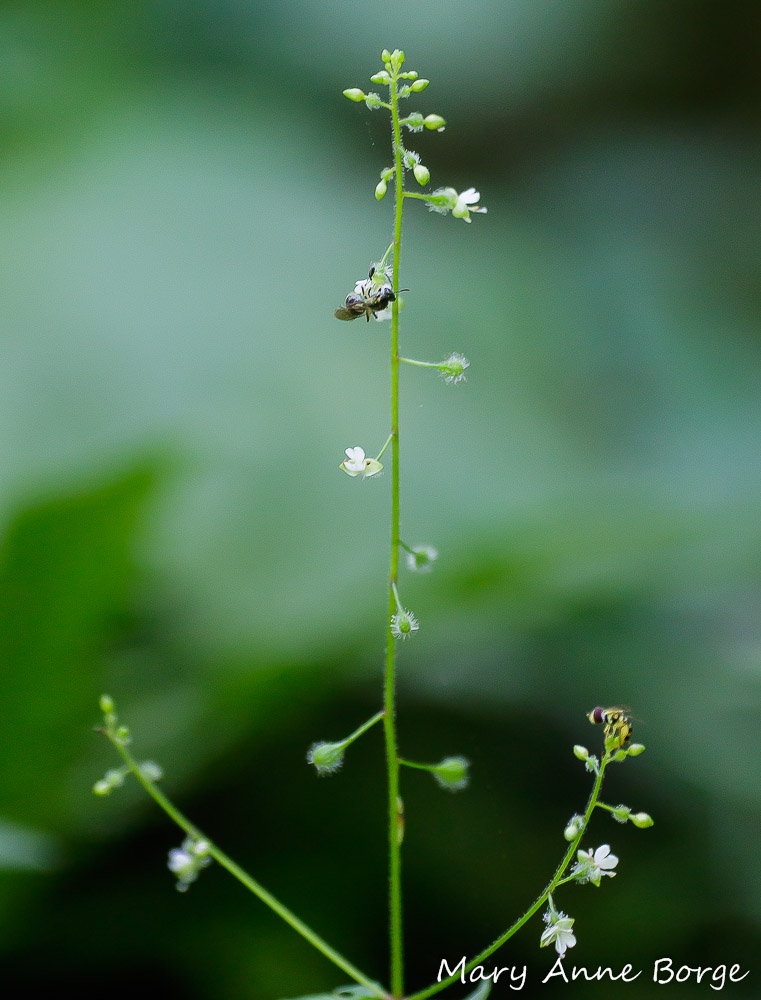
The bees visit the flowers for both nectar and pollen. The little sweat bee in the photo below is feeding herself, but also gathering pollen, visible on her hind legs, to bring back to her nest for her larvae.

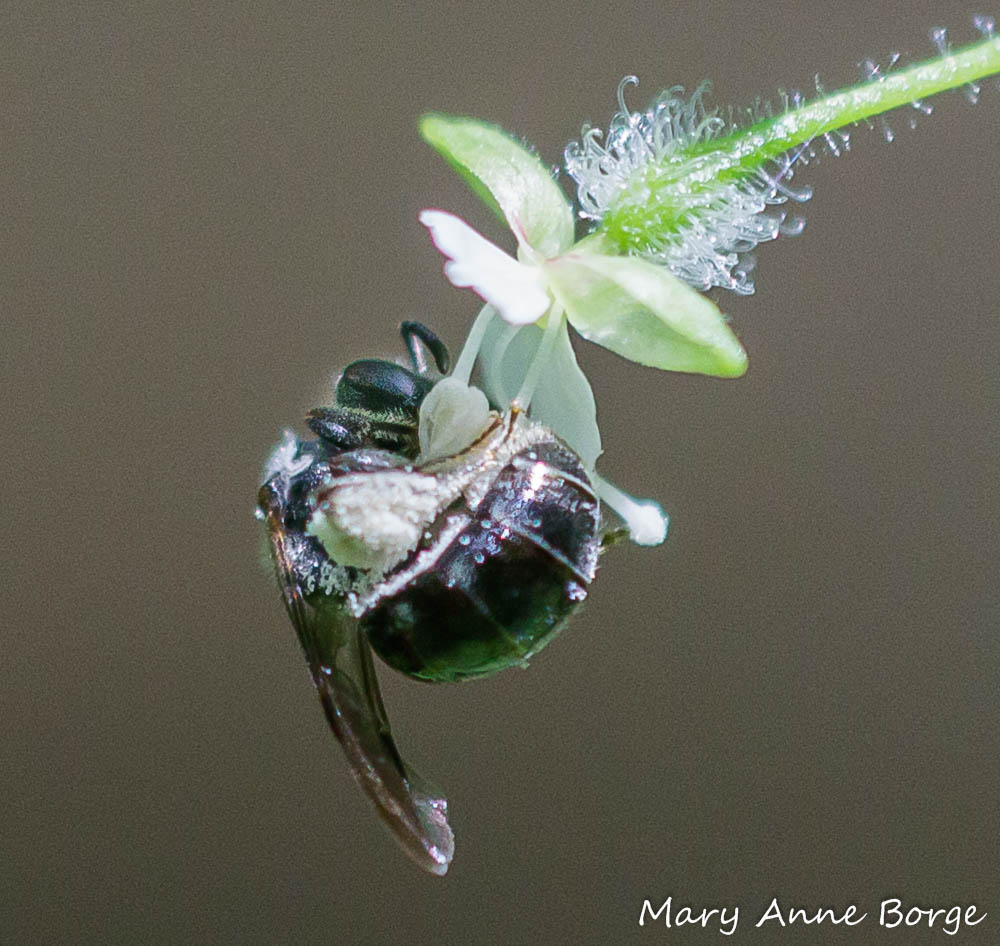
On several occasions, I have watched small swarms of tiny flower flies hovering around Enchanter’s Nightshade flowers. ‘Hover fly’ is another common name for this group of insects, because of their ability to perform this maneuver. Any individual I was able to see well enough to identify was a Toxomerous geminatus.
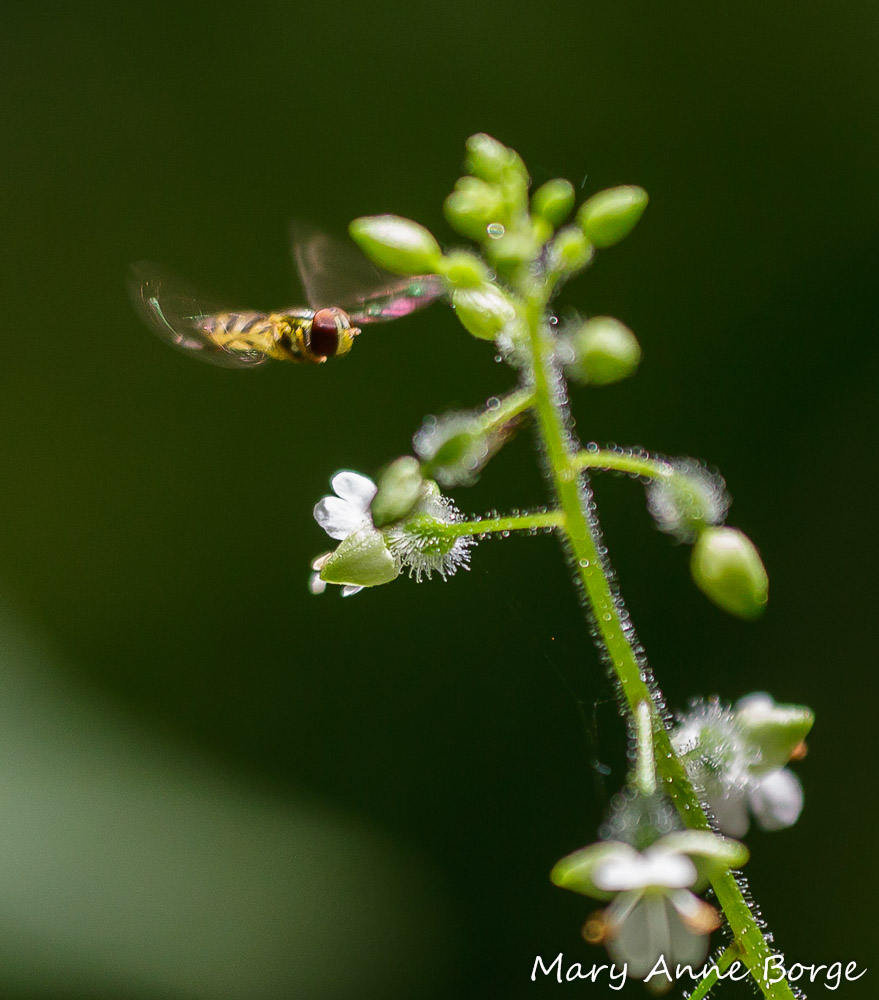
Like the bees, the flies visit the flowers for both nectar and pollen, both of which are important food sources for them.
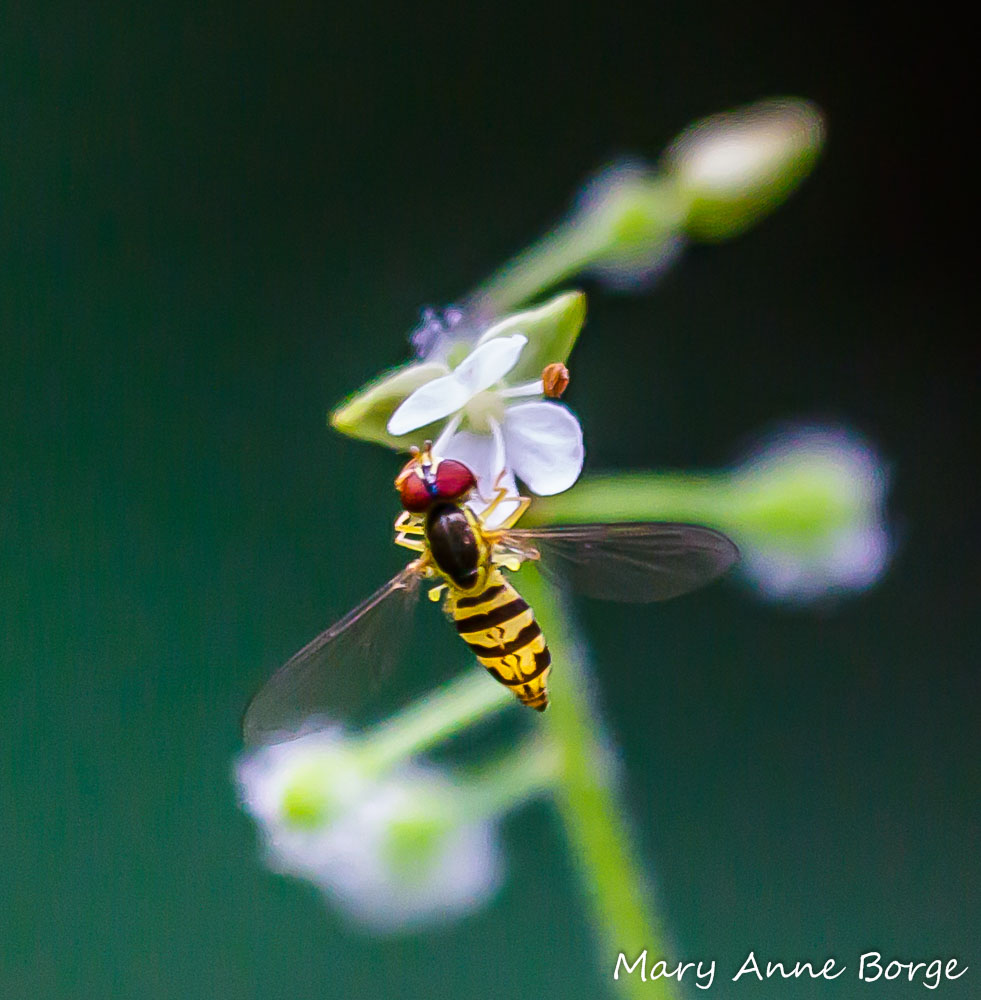

After pollination, the flower’s petals, sepals, stamens and pistils wither and fall away, leaving the ovary to ripen to a fruit.

As the ovary matures to a fruit, the hooked hairs covering the fruit stiffen, becoming an effective mechanism to grab on to the fur or pants of a passing animal who then unknowingly helps to disperse the seeds.

Enchanter’s Nightshade also has the ability to reproduce through its underground parts, sending up additional shoots to form colonies.
Why the name Enchanter’s Nightshade? The Greek goddess and accomplished enchantress Circe reportedly often used potions and herbs to achieve her ends, sometimes turning enemies into other animal species. Plants in this genus, Circaea, were thought to be among the ingredients she used, so were named for her. So far, unfortunately, I haven’t found any of her recipes.
Enchanter’s Nightshade can be found along forest trails in the United States from Maine west to North Dakota, south as far as Oklahoma, Louisiana, and Georgia, and in Canada from Quebec and Nova Scotia west to Manitoba.
Take a cooling summer walk in the woods to look for Enchanter’s Nightshade and its pollinators.
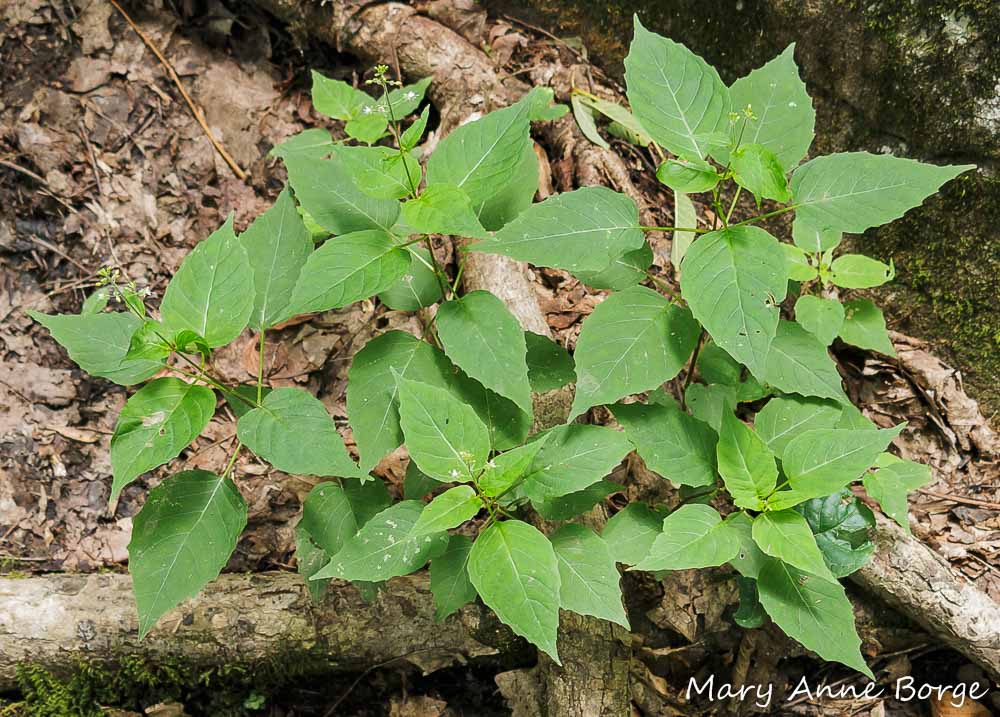
Note: Some sources refer to this species as Circaea lutetiana, Circaea lutetiana L. ssp. canadensis, or Circaea quadrisulcata.
Resources
Global Biodiversity Information Facility (GBIF)
Minnesota Wildflowers, copy and paste: https://www.minnesotawildflowers.info/flower/enchanters-nightshade
Niering, William A. The Audubon Field Guide to North American Wildflowers, Eastern Region. 1979.
